| Listing 1 - 10 of 10 |
Sort by
|
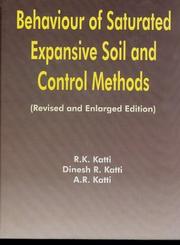
ISBN: 9058092577 Year: 2002 Publisher: Lisse : Balkema Publishers,
Abstract | Keywords | Export | Availability | Bookmark
 Loading...
Loading...Choose an application
- Reference Manager
- EndNote
- RefWorks (Direct export to RefWorks)
Anthropogenic soils --- Soil water movement --- soil compaction --- soil chemicophysical properties --- Soil sorption --- Soil texture --- soil mechanics
Dissertation
Year: 2002
Abstract | Keywords | Export | Availability | Bookmark
 Loading...
Loading...Choose an application
- Reference Manager
- EndNote
- RefWorks (Direct export to RefWorks)
Data regarding different characteristics - climatic, geological, pedological, botanical (floristic, phytosociologic, evolutionary), phytogeochemical and ecosystemical - of Southern-Central African cupriferous outcrops as well as information concerning relations existing, yesterday and today, between Man and copper outcrops through mining activity and phytoremediation have been knowledgeably summarised. This knowledge acquired, the methodology suitable for the phytocenotic potential assessment regarding one copper site prior to its possible mining has been set up. Previously, a set of information is provided concerning firstly cupriferous outcrops (inventory, distinction of three metallogenic provinces, alteration intensity regarding the original vegetation, botanical prospecting efforts) and secondly cupricolous flora (inventory, endemism, concept of taxa with high phytochemical potential). It transpires that, as far as the recently prospected "anomalies" are concerned, and accordin g to the metallogenic provinces involved, a large proportion of orebodies offers an original vegetation partially altered, or totally destroyed. The pollution forms observed have been listed. The extremely detailed study of the cupricolous taxa within the genus Buchnera L., as well as the description of a new species, Crotalaria cupricola Leteinturier, are presented. Taken as a whole, the study of an ecological unit concerns two components, namely soil and vegetation. The study of several copper outcrops allows to practice this methodology. Its application was also extended to a lead-zinc outcrop located in the same area. Management measures regarding species threatened by mining activities are suggested. Next, revegetation tools for damaged sites are proposed : they resort to the ecologic groups concept on the one hand and to taxa particularly suitable for phytostabilisation on the other. Finally, in situ and ex situ experiences regarding cuprophytes germination and growth have led to pinpoint a number of taxa interesting for their vitality regarding phytoremediation.
Mineral soils --- Anthropogenic soils --- Copper --- Mineral resources --- Extraction --- vegetation. --- vegetation --- Bioaccumulation --- Indicator plants --- Detoxification. --- Detoxification --- ecology --- Africa
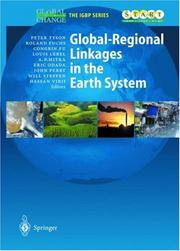
ISSN: 16192435 ISBN: 3540424032 9783540424031 Year: 2002 Publisher: Berlin: Springer,
Abstract | Keywords | Export | Availability | Bookmark
 Loading...
Loading...Choose an application
- Reference Manager
- EndNote
- RefWorks (Direct export to RefWorks)
Global environmental change --- Nature --- Anthropogenic effects on nature --- Ecological footprint --- Human beings --- Anthropogenic soils --- Human ecology --- Environmental change, Global --- Global change, Environmental --- Global environmental changes --- Change --- Ecology --- Effect of human beings on --- Climatic changes --- Nature - Effect of human beings on
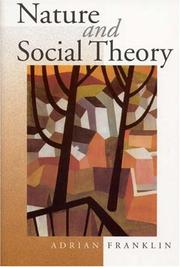
ISBN: 0761963774 0761963782 1412932041 1280369914 9786610369911 9781412932042 9781446219195 1446219194 9780761963776 9780761963783 6610369917 9781280369919 Year: 2002 Publisher: London : Sage,
Abstract | Keywords | Export | Availability | Bookmark
 Loading...
Loading...Choose an application
- Reference Manager
- EndNote
- RefWorks (Direct export to RefWorks)
Adrian Franklin considers the relationship between humans and nature, arguing that the firm boundaries between nature and culture have been breached. The author's critique cites man as a polluter and destroyer.
Human ecology. --- Nature --- Social ecology. --- Social aspects. --- Ecology, Social --- Environment, Human --- Human ecology (Social sciences) --- Human environment --- Ecology --- Human beings --- Social aspects --- Social sciences --- Ecological engineering --- Human geography --- Effect of environment on --- Effect of human beings on --- Philosophy of nature. --- Effect of human beings on. --- Nature, Philosophy of --- Natural theology --- Anthropogenic effects on nature --- Ecological footprint --- Anthropogenic soils --- Human ecology --- Philosophy
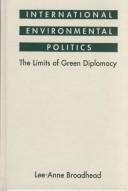
ISBN: 1588260925 1588260682 1685855113 Year: 2002 Publisher: Boulder Rienner
Abstract | Keywords | Export | Availability | Bookmark
 Loading...
Loading...Choose an application
- Reference Manager
- EndNote
- RefWorks (Direct export to RefWorks)
Environmental management. --- Environmental policy --- Nature --- International cooperation. --- Effect of human beings on. --- Environmental management --- #SBIB:327.7H42 --- #SBIB:35H434 --- Anthropogenic effects on nature --- Ecological footprint --- Human beings --- Anthropogenic soils --- Human ecology --- Environmental stewardship --- Stewardship, Environmental --- Environmental sciences --- Management --- International cooperation --- Effect of human beings on --- Specifieke internationale organisaties en samenwerking: milieu --- Beleidssectoren: milieubeleid en ruimtelijke ordening
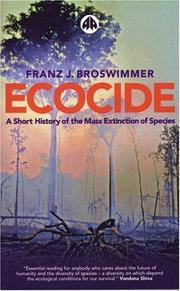
ISBN: 1783713488 1849641595 0585488851 9781849641593 9780585488851 0745319351 9780745319353 0745319343 9780745319346 9781783713486 Year: 2002 Publisher: London ; Sterling, Va. : Pluto Press,
Abstract | Keywords | Export | Availability | Bookmark
 Loading...
Loading...Choose an application
- Reference Manager
- EndNote
- RefWorks (Direct export to RefWorks)
Nature --- Extinction (Biology) --- Biodiversity conservation --- Biodiversity --- Biological diversity conservation --- Conservation of biodiversity --- Diversity conservation, Biological --- Gender mainstreaming in biodiversity conservation --- Maintenance of biological diversity --- Preservation of biological diversity --- Conservation of natural resources --- Ecosystem management --- Animals --- Extirpation (Biology) --- Biology --- Extinct animals --- Anthropogenic effects on nature --- Ecological footprint --- Human beings --- Anthropogenic soils --- Human ecology --- Effect of human beings on. --- Social aspects. --- Conservation --- Extinction --- Extirpation
Multi
ISBN: 2880852331 2880852552 288085265X 2880852722 9782880852924 9782940443086 9782940443376 9782940443871 9782940529407 9782940529902 9782940529995 Year: 2002 Publisher: Gland WWF
Abstract | Keywords | Export | Availability | Bookmark
 Loading...
Loading...Choose an application
- Reference Manager
- EndNote
- RefWorks (Direct export to RefWorks)
Nature --- Environmental monitoring --- Conservation of natural resources --- 571 Natuurbescherming --- Conservation of resources --- Natural resources --- Natural resources conservation --- Resources conservation, Natural --- Environmental protection --- Natural resources conservation areas --- Biomonitoring (Ecology) --- Ecological monitoring --- Environmental quality --- Monitoring, Environmental --- Applied ecology --- Environmental engineering --- Pollution --- Anthropogenic effects on nature --- Ecological footprint --- Human beings --- Anthropogenic soils --- Human ecology --- Effect of human beings on --- Conservation --- Measurement --- Monitoring --- dierenbescherming --- milieubescherming --- milieuvervuiling
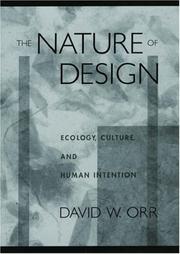
ISBN: 0197562221 0198033885 1602567514 1280560495 9786610560493 1602565082 9780198033882 9781602565081 9781602567511 1423776860 9781423776864 6610560498 019514855X 9780195148558 0199883939 Year: 2002 Publisher: Oxford, [England] ; New York, New York : Oxford University Press,
Abstract | Keywords | Export | Availability | Bookmark
 Loading...
Loading...Choose an application
- Reference Manager
- EndNote
- RefWorks (Direct export to RefWorks)
Ecological design is an emerging field that aims to recalibrate what humans do in the world according to how the world works as a biophysical system. Design in this sense is a large concept having to do as much with politics and ethics as with buildings and technology. The book begins by describing the scope of design, comparing it to the Enlightenment of the 18th century. Subsequent chapters describe barriers to a design revolution inherent in our misuse of language, the clockspeed of technological society, and shortsighted politics. Orr goes on to describe the critical role educational institutions might play in fostering design intelligence and what he calls "a higher order of heroism." Appropriately, the book ends on themes of charity, wilderness, and the rights of children. Astute yet broadly appealing, The Nature of Design combines theory, practicality, and a call to action.
Nature --- Human ecology --- Environmental responsibility. --- Design. --- Ecological engineering. --- Ecological accountability --- Ecological responsibility --- Environmental accountability --- Environmental ethics --- Responsibility --- Anthropogenic effects on nature --- Ecological footprint --- Human beings --- Anthropogenic soils --- Ecotechnology --- Environmental management --- Creation (Literary, artistic, etc.) --- Environmental quality --- Ethics --- Effect of human beings on. --- Moral and ethical aspects. --- Moral and ethical aspects --- Environmental ethics. --- Global environmental change. --- Environmental change, Global --- Global change, Environmental --- Global environmental changes --- Change --- Ecology --- Climatic changes
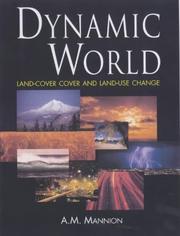
ISBN: 0340806788 0340806796 Year: 2002 Publisher: London : Arnold,
Abstract | Keywords | Export | Availability | Bookmark
 Loading...
Loading...Choose an application
- Reference Manager
- EndNote
- RefWorks (Direct export to RefWorks)
Nature --- Landscape changes --- Land use --- Homme --- Paysages --- Utilisation du sol --- Effect of human beings on --- Influence sur la nature --- Modifications --- Landscape changes. --- Land use. --- Effect of human beings on. --- 502.6 --- 630*91 --- 911.3:63 --- Protection of inanimate nature, landscape --- Land use, land-use policy, afforestation policy --- Landbouwkundige geografie. Agrarische geografie --- 630*91 Land use, land-use policy, afforestation policy --- 502.6 Protection of inanimate nature, landscape --- Land cover --- Anthropogenic effects on nature --- Ecological footprint --- Human beings --- Anthropogenic soils --- Human ecology --- Change, Landscape --- Geomorphology --- Cover, Land

ISBN: 1853837393 1853837385 9781853837395 Year: 2002 Publisher: London: Earthscan,
Abstract | Keywords | Export | Availability | Bookmark
 Loading...
Loading...Choose an application
- Reference Manager
- EndNote
- RefWorks (Direct export to RefWorks)
Études d'impact. --- Nature Management (General). --- Economic development --- Environmental impact analysis. --- Environmental indicators. --- Human ecology. --- Nature --- Sustainable development. --- Environmental aspects. --- Effect of human beings on. --- Human ecology --- Sustainable development --- Environmental indicators --- Environmental impact analysis --- Effect of human beings on --- Environmental aspects --- Development, Sustainable --- Ecologically sustainable development --- Economic development, Sustainable --- Economic sustainability --- ESD (Ecologically sustainable development) --- Smart growth --- Sustainable economic development --- Anthropogenic effects on nature --- Ecological footprint --- Human beings --- Anthropogenic soils --- Ecology --- Environment, Human --- Human environment --- Ecological engineering --- Human geography --- Ecological indicators --- Environmental indexes --- Environmental indices --- Indexes, Environmental --- Indicators, Environmental --- Indices, Environmental --- Environmental monitoring --- Analysis of environmental impact --- Environmental assessment --- Environmental impact assessment --- Environmental impact evaluation --- Impact analysis, Environmental --- Environmental auditing --- Environmental protection --- Eco-development --- Ecodevelopment --- Social aspects --- Effect of environment on --- duurzaamheid --- ecologie --- Nature - Effect of human beings on --- Economic development - Environmental aspects
| Listing 1 - 10 of 10 |
Sort by
|

 Search
Search Feedback
Feedback About UniCat
About UniCat  Help
Help News
News